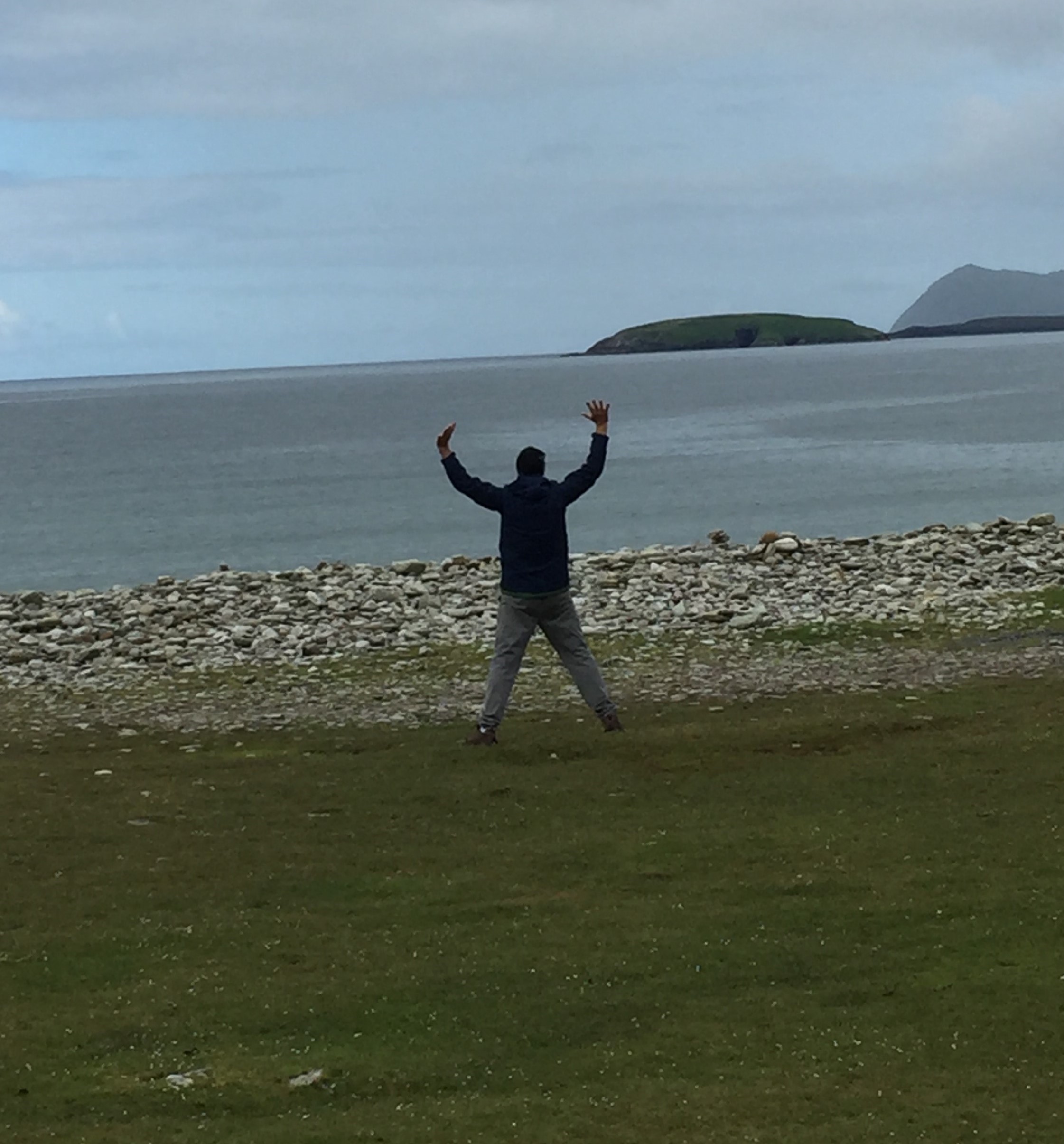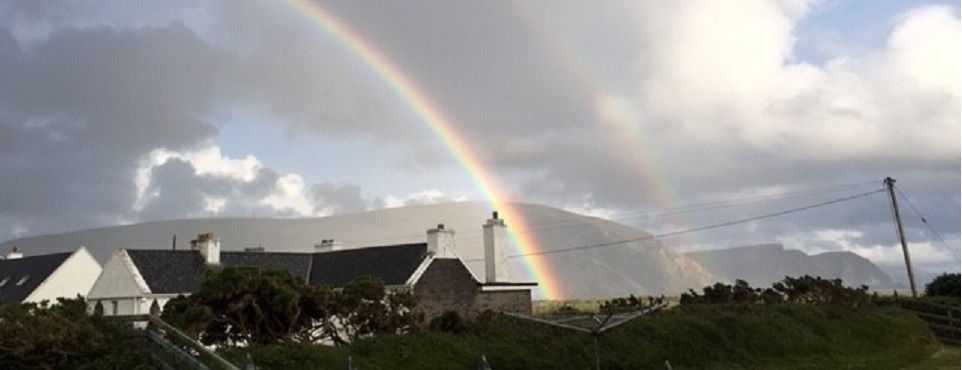Par Matt Shorten
En juin 2019, dix retraités du nord-est de l’Amérique se sont aventurés à travers l’étang jusqu’à l’île d’Achill, un havre de paix sur la côte la plus à l’ouest de l’Irlande. Dirigée par le révérend Sue Foster (l’épouse de Roger Solomon) et le révérend Maebh du Centre de retraite du Chemin Sacré, notre quête était d’explorer comment la sagesse de la spiritualité celtique pourrait éclairer notre vie quotidienne.
L’Irlande est réputée comme une terre magnifique et accueillante, et qui a connu des difficultés et des souffrances terribles, mais parfois, il a également été le centre de la civilisation et de la culture occidentales. Leur profonde spiritualité remonte aux traditions druidiques, des siècles avant l’arrivée du christianisme. Comme les fondateurs de Shintaido, les Celtes se concentraient sur le développement d’une relation organique avec la nature et le lien avec la grâce dans toute la création, affirmant les aspects de notre existence élémentaire. Contrairement au dogme de l’église romaine de «péché originel», les dirigeants là-bas promulgué la notion de «bénédiction originale».
Bien que les vents de l’Atlantique Nord y soient assez forts pour souffler votre chi, les indigènes ressentent un puissant sentiment d’alignement avec la terre sacrée et le ciel. C’est un bon endroit pour développer Ten-Chi-Jin. (Dix et ciel; Chi et terre; Jin et soi-même)
En 563, Columba est venu à l’île d’Iona et a établi le premier monastère en Ecosse. L’un des premiers centres du christianisme celtique, ils pratiquaient un égalitarisme radical neutre en matière de genre, parfois dirigé par une abbess féminine.
Influencé par les textes anciens de la Tradition de la Sagesse et les écrits de saint Jean (celui qui écoutait le battement de cœur de Jésus), ce mouvement résistait à l’Église catholique romaine autoritaire et hiérarchique aussi longtemps qu’ils le pouvaient. Selon la légende, les jeunes guerriers passeraient leur dernière année de formation à vivre dans le rôle de genre du sexe opposé à la recherche d’un équilibre de vie plus à l’écoute.
J. Philip Newell writes “The passion of the Celtic mission lay in finding meaning in the heart of all life, a sense of wonder in relation to the elements, to recognize the world as the place of revelation, and the whole of life as sacramental. The western isles developed a rich treasure of prayers that referenced the sun, moon and stars as graces, and the spiritual coming through the physical. God is seen as the Life within all life. The Celtic crosses, triangulated knots, and illuminated texts incorporated designs that symbolized the interlacing of God and humanity, heaven and earth, spirit and matter.”1
I see clear parallels here with the mystical and anthropomorphic aspects of Shintaido. Aoki Sensei quotes sword master Sekiun to the same point: “We call the highest level which could be attained sei or “holiness”. This realm is yuiitsu muni- just as the sun is one and the moon is one. It is the highest and the holiest.”2

As Michael Thompson Sensei wrote in the Introduction to the Shintaido handbook, “Where does the body end and the mind or spirit begin? He (the budoka) is a specialist of that invisible and yet very physical part of ourselves which our doctors have not yet discovered. His ‘treatment’ is to teach us to communicate with our deeper selves, with each other, with nature and with God through the medium of our bodies”.3
One of the sacred practices we did on the retreat was to walk a stone labyrinth, situated on a peaceful hillside between a towering waterfall and a pristine sandy beach. Unlike a maze, a labyrinth has only one way in and one way out, but is nevertheless replete with surprising turns and discoveries. As one enters, you set an intention, and then just perform the movement with sincerity, trusting that when you finish, a clarity will arise upon emerging. Or as Aoki Sensei has said, “The locus of one swing of the sword is itself a sign”.4
Le dernier jour là-bas, quand nos esprits étaient élevés, mais notre corps agité après une longue méditation assise, j’ai proposé de diriger le groupe dans un mouvement édifiant. Nous avons fait Ritsu-i-ju Meiso-ho (méditation debout à 10 positions), wakame (algues), et aozora-taiso (exercice ciel bleu), le tout avec des visualisations de plage et de ciel. Bien que certains dans le groupe étaient limités physiquement, nos cœurs étaient ouverts à ce qui était à l’intérieur et à l’extérieur.
1) J. Philip Newell, Listening to the Heartbeat of God, p. 3, Paulist Press.
2) Haroyuki Aoki, Shintaido, p. 31, Shintaido of America.
3) ibid, p. 12.
4) ibid , p. 35.



